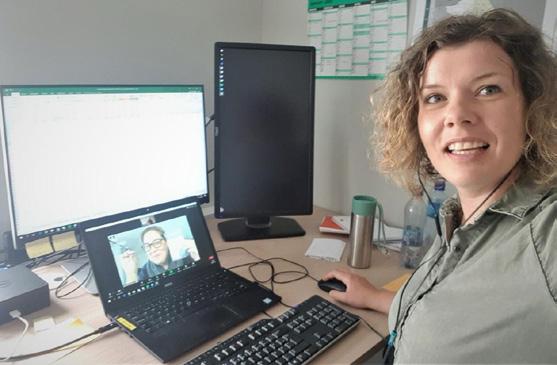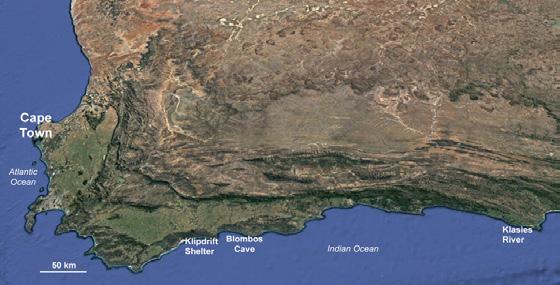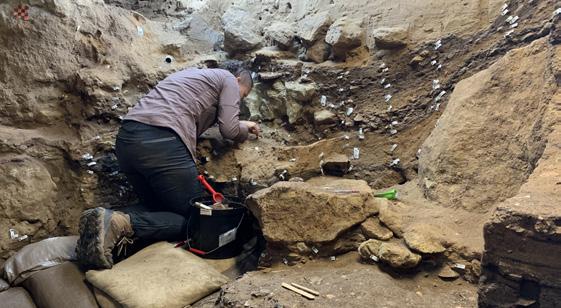ACTIVITIES IN 2020 18
BRAIN ACTIVATION DURING FLINTKNAPPING Archaeological findings tell us that our Middle Stone Age ancestors were dexterous flintknappers, but they remain silent on the cognitive preconditions for engaging in such activities. This is where neuroscience steps in: by opening up a window into the workings of the human brain via brain-imaging studies. For our studies, we make use of functional magnetic resonance imaging (fMRI). While lying in the magnetic resonance scanner, participants are asked to envision as vividly as possible how they would perform a specific task. If a region of the brain is in use, more blood flows to it. Because fMRI data reveal such changes of blood flow in different brain regions, they point to those neural networks that are involved in the activity being envisioned by the participant.
THE DESIGN OF THE STUDY In spring 2020, we had several meetings discussing the experimental paradigm and design of the planned fMRI study on flintknapping. In order to obtain necessary and proper contrasts, we applied a design with alternating periods of (a) resting with no instructions, (b) envisioning producing a tool from a piece of unworked flint, and (c) envisioning producing a LEGO object from disjointed LEGO bricks. During each of these periods participants were shown images on a headset.
The table presents examples of the three types of visual stimuli used. These were shown to the participants, with repeated 40 and 20 sec presentations for each category. The participant’s task in the two imagery conditions was to envision constructing the intended object, either from the unworked flint or from the scattered LEGO pieces. This means that, for the key condition (i.e., the toolmaking imagery), we would have two control conditions, or “contrasts”: a passive resting condition and an active condition with demands for visuo-spatial and motor imagery, but unrelated to the process of producing a flint axe or arrow-head. We also decided to investigate making four different types of tool – Oldowan, Acheulean, Levallois, and Still Bay. These were presented to the participants in either ascending or descending order by age, and each tool type was paired with a different LEGO object to be assembled. This protocol was approved by the regional ethics committee for medical research in western Norway.
(a) During resting periods, the participant in the scanner would see a blank screen, with a fixation cross in the middle.
(b) While envisioning tool-making, the participant would see an unworked flint to imagine knapping. The picture shows one of the unworked flint images used.
(c) While envisioning LEGO construction, the participant would see an assembled LEGO object together with the pieces used to construct it, scattered on a background. The picture shows one of the different LEGO objects used.





















